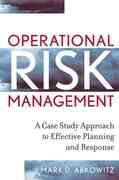Ch 10: Mastery Assignment - Inference About Means and Proportions with Two Populations Back to Assignment Attempts: Average: / 2 4. Using Excel - Estimating the difference between two population means You are a marketing expert for a company that is producing a new kind of energy bar. You want to provide evidence that consuming the new type of bar 1 hour before engaging in strenuous exercise of long duration-such as running a marathon-will improve performance. You decide to conduct a test at a half-marathon race. You give the bar to a randomly selected group of 35 participants (the treatment group). You randomly select a second group of 32 participants, to whom you do not give the energy bar (the control group). To answer the questions that follow, download an Excel" spreadsheet containing the race times in minutes for each of the two groups by clicking on the following words in bold: Download Excel File. In the following sample Excel spreadsheet, enter the appropriate formulas to estimate the difference in mean times between the treatment and control groups (Average Time for Control group - Average Time for Treatment group). Note that only the first 20 rows are shown here, but all values are included in the downloaded Excel page. Use a 90% confidence level. Note: The function T.INV.2T in Excel 2010 is equivalent to TINV for earlier versions of Excel. Similarly, the function STDEV.S in Excel 2010 is equivalent to STDEV for earlier versions of Excel. B C D E F 1 Control Treatment Interval Estimate of Differences in Population Means: 2 141.57 89.14 (Population standard deviations unknown) 3 110.33 129.03 4 130.01 124.88 Control Treatment 5 116.32 103.75 Sample Size =COUNT (A2:A33) =COUNT (82:836) 144.27 158.05 Sample Mean =AVERAGE(A2:A33) =AVERAGE(B2:B36)7 139.08 165.48 Sample Standard Deviation =STDEV(A2:A33) =STDEV(B2:836) 94.96 135.69 9 114.59 77.29 Estimate of Variance =E7^2/85 + F7^2/F5 10 128.5 127.7 Standard Error =SQRT(E9) 11 128.88 147.76 12 148.68 133.05 Confidence Coefficient 0.90 13 123.32 95.67 Level of Significance 0.10 14 127.9 118.75 Degrees of Freedom =E9^2/((1/(85-1))*(87 2/E5)~2+ ((1/(F5-1))*(F7~2/F5)~2)) 15 83.8 138.8 t Value =T.INV. 2T (E13,E14) 16 115.36 89.7 Margin of Error =E15*E10 17 175.43 127.95 18 169.68 96.58 Point Estimate of =E6-F6 Difference 19 103.98 173.52 Lower Limit =E18-E16 20 104.55 133.88 Upper Limit =E18+816 Enter these same formulas in your downloaded Excel spreadsheet. Use the calculated values to complete the following statement. (Hint: When comparing the number of minutes it takes to complete the race, remember that larger numbers correspond to slower times.) The average time of participants who received the bar was 133.55 . minutes. The average time of participants who did not receive the bar was 128.71 * minutes. You can say with 90% confidence that runners who ate the energy bar ran this course, on average, between minutes and minutes than those who did not eat the energy bar. Grade It Now Save & Continue








